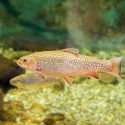After the repeat conviction and evasion of trainer Gilbert Bauer, what hope is there for Baby?
After the repeat conviction and evasion of trainer Gilbert Bauer, what hope is there for Baby?
17.05.2023
After the repeat conviction and evasion of trainer Gilbert Bauer, what hope is there for Baby?
Exploitation for shows
We are publishing, on the occasion of the latest conviction of Baby’s trainer, recent footage and other older footage that has never been released, of the way in which the African elephant had to survive and the conditions that she was kept in and still has to endure, now that he has transferred her to the Belvédère Zoo in Tunisia. Shameful for the Ministry of Ecology who has deliberately ignored the misery of French circus elephants and, with their inaction, has allowed their endless suffering and exploitation to continue.
One Voice was the source of the first conviction of Gilbert Bauer in 2019, a circus trainer who locked Baby up all year round at the big cat park in Saint-Léger-en-Bray run by his brother, Kid. Both of them lied shamefully to the public, making them believe that the old elephant suffering with her leg was free to roam around the park, when in fact she was being kept shut up day and night in the transport lorry, completely illegally. Bauer then disappeared for a while.
Lying to the public, backstage hell, and, thanks to One Voice, two convictions!
And when we thought we had come across Dumba at the Cirque de Paris in Aubevoye in the Eure Department in March 2020, it was in fact Baby that we had found there, exploited as always. We therefore enlisted a private investigator, documented the show and the living conditions outside of it, and carried out surveillance for several days, during which the entire country closed in on itself and turned its attention to the fate of the animals in travelling circuses.
This investigation was the subject of a detailed report and a complaint to the OFB, who helped, among others, to save Jon and lionesses Patty, Céleste, Hannah, and Marli from this circus. In September 2022, we facilitated Bauer being convicted again, this time for a repeat offence, thanks to a report from the investigator from March 2020.
Bauer, having taken refuge with a film trainer, kept Baby in the lorry and put up barriers around it.
Under pressure put on by our investigation footage and our proceedings in 2019, from 2020, Bauer settled at the property of Muriel Bec, an animal trainer, specifically for wolves for cinema and all kinds of filming. There, the discourse was equally well-established on the so-called ‘ideal’ conditions for keeping Baby in (a pond would have been dug for her, in reality for the view from paying lodges) as on the safety (so no one could approach and ‘risk’ taking incriminating images).
Idealised images for clients and the television. A lifetime of isolation for Baby
The only moments when she had a chance to stretch her legs in an enclosure and could choose her own food from the trees were the days where clients paid for three hours to see this, or when a television channel came to the depths of Loiret to film a reality TV show or an infomercial or documentary.
And she was not given this opportunity between March and October… Outside of the paid seasonal outings, such as at Kid Bauer’s in Parc Saint Léger, Baby hardly left her lorry. Or else to take a few steps, under a small marquee in front of her metal box.
The tarpaulins covering the fences in 2020 were turned into high wooden walls. We have seen the barriers being put up around the lorry, this small tent, and the trainer’s caravan becoming even more solid and impenetrable over time.
The latest conviction prevented him from showing Baby to the public for five years!
From September 2022 and for a duration of five years, Bauer could no longer exploit Baby. And, as indicated in the Ministerial decree of 2011 on travelling establishments (still valid seeing as the Ministry of Ecology has not published the enforcement decrees for the law voted in in November 2021), wild animals cannot be kept under travelling conditions (read: in a lorry) if they are not being shown to the public.
Baby continued to be exploited until at least 31 October 2022. It was still possible to pay for an ‘elephant encounter’. In February 2023, she was still used as the face of the “See you in animal land” imagery.
We have known for a few months that Bauer was looking everywhere for a place to put Baby for the next five years. We are ready to take her in and to place her into a sanctuary, but as always, the authorities have turned a deaf ear. Everything, absolutely everything, that we were planning would have been better than what happened. As always. Maya knows all about it, and Dumba too. Gilbert Bauer’s Machiavellian sleight of hand was to offer Baby to the ‘Tunisian people’ and to thus continue to exploit her at the Belvédère Zoo, a place where we have seen people throwing stones at a crocodile and where a bear is on its last legs. At 38 years of age, Baby will never find peace. And as for Bauer, in reality, he has impunity.
The law against mistreatment, like the ministry that enacted it in France, has abandoned circus animals to a worse fate, from exploitation, subletting, bartering, reselling… We will never give up on them!
Translated from the French by Joely Justice









